Bath
Top-Rated Tourist Attractions in Bath
Widely considered Britain's most attractive small city, Bath is famous for the archeological wonder from which it takes its name: its 2,000-year-old Roman baths. Nestled in the Avon Valley between the Cotswolds and the Mendip Hills in the beautiful county of Somerset, the City of Bath is also well known for its perfectly preserved honey-colored Georgian houses. Today, some 500 of the city's buildings are considered of historical or architectural importance — so important, in fact, that Bath was granted World Heritage Site status in 1987, one of only a handful of such locations in the UK. A fun thing to do to ensure you get the most out of your visit is to stroll the Bath Skyline Walk, a six-mile network of footpaths that take in the best views of the city.
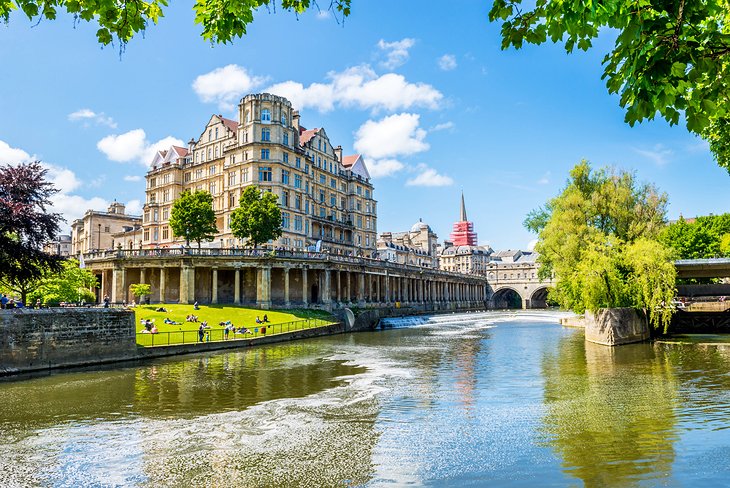
River Avon in Bath
In addition to enjoying the city's spectacular architecture, parks, and gardens, visitors also like to partake in its many cultural activities. Popular things to do include exploring Bath's many museums, entertainment venues, and tourist attractions. Bath is also well known for its many top-rated festivals and events, including the Bath Christmas Market (one of the largest festive shopping opportunities in the UK) and the always well-attended Bath International Music Festival. Learn more about what to see and do with our list of the top attractions in Bath.
1. Roman Baths
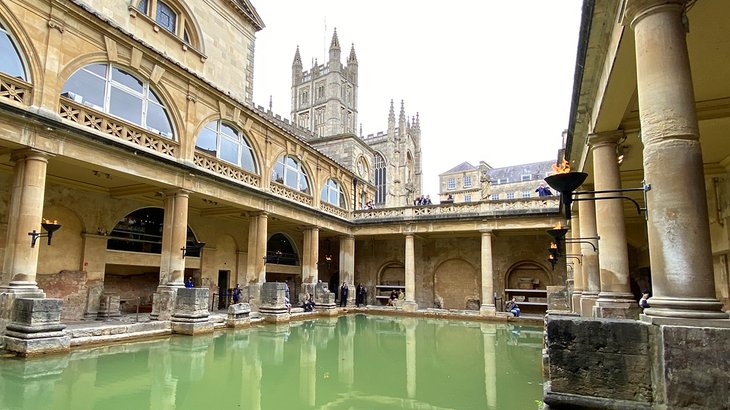
Roman Baths
While the ancient Romans are credited for having established Bath's ancient hot springs as a place of relaxation and rejuvenation, legend has it their healing powers were discovered some 500 years earlier by a British king. But it was the Romans who left their mark, building the city's famous Roman Baths and Temple of Sulis Minerva in 75 BC around the largest of the city's three hot springs. It's not difficult to see the attraction: the water contains 43 different minerals, gushes from a depth of nearly 10,000 feet at a rate of 275,000 gallons a day, and is a constant 46.5 degrees Celsius.
Voted Britain's most romantic buildings, the award-winning Roman Baths and Temple are among the finest examples of Roman architecture remaining in England and attract more than a million visitors each year. Many of the artifacts found during various archeological digs, including altar stones and exquisite mosaics, are on display in the museum or around the Great Bath itself. While regular free guided tours are available, those wanting to go at their own pace can pick up an audioguide with their tickets (a version is also available for children, who are also encouraged to engage with staff dressed in authentic period costumes).
Alternatively, if you're looking to combine the Roman Baths with a tour of other city attractions, consider joining a fun two-hour Bath city walking tour. Highlights of these morning or afternoon tours include the best parts of the baths — including the hot springs, the Great Bath, the pump rooms, and the changing rooms — plus a walk to Royal Crescent and Bath Abbey.
2. Bath's Georgian Roots: Royal Crescent
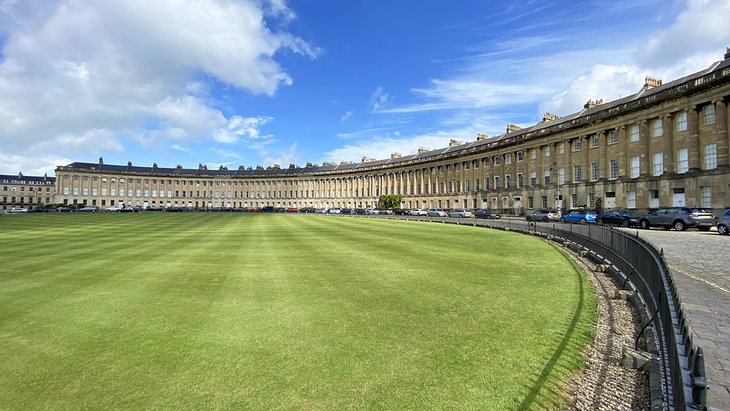
Bath's Georgian buildings and Royal Crescent
Exploring Bath's perfectly preserved Georgian architecture is probably the second best excuse to visit this beautiful city. A great place to start your adventure is the Museum of Bath Architecture, a unique facility located in a former private chapel that demonstrates how classical design influenced the city's buildings. It's also home to the incredibly detailed Bath Model, a magnificent 1:500 scale architectural model of the historic city center.
Walk to the northwest section of the city, where most of the best architectural examples are found. Check out Queen Square and Gay Street, with their beautifully symmetrical façades dating from the early 18th century, then head to the Royal Circus, a perfect circle of three-story homes with different classical orders (column types) on each level. Finally, there's Royal Crescent, a monumental semicircular sweep of residential townhouses with a breathtakingly uniform, palace-like façade. No.1 Royal Crescent is open to the public (most homes on the crescent remain privately owned) and provides a rare glimpse into what life was like for the wealthy — along with their not-so-wealthy servants — in the 1770s. A variety of guided tours, educational events, and themed itineraries are available.
3. Bath Abbey
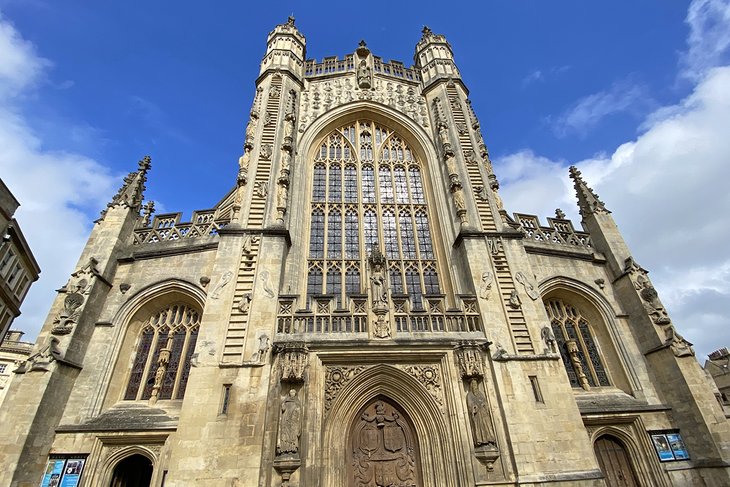
Bath Abbey
The Gothic cathedral of the Bishop of Bath and Wells (aka "the Bath Abbey") was founded in 1499 after Bishop Oliver King experienced a vivid dream of angels climbing up and down ladders to and from heaven. He also heard a voice declaring: "The crown should plant an olive tree and the king restore the church." Interpreted as a sign to rebuild the church (the site had been used by Christians as a place of worship since AD 757), the dream was intricately immortalized in stone on the building's west side.
A good time to visit for those with flexible itineraries is during one of the frequent music concerts or public lectures (check the abbey's website for dates and details). There's also a guided tower tour program, which takes in the bell chamber; clock face; and roof, from which you'll get a superb view over the city and neighboring Roman Baths (it's a 212-step climb, but a rest area is available halfway up). For a truly memorable experience, an after-dark private tower visit is also available for couples.
4. Pulteney Bridge
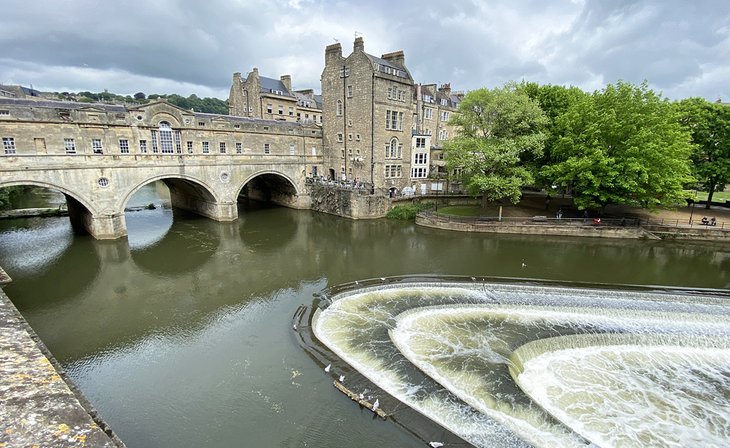
Pulteney Bridge
Pulteney Bridge is one of only a handful of bridges still standing with buildings atop them. Completed in 1774 to connect central Bath to undeveloped land on the opposite side of the River Avon, it's considered one of the most iconic such bridges in the world (so much so that it appeared in the film version of Les Misérables). Three arches support a variety of quaint little shops and restaurants, and the bridge opens onto Great Pulteney Street, with its beautiful Georgian-era homes. The bridge also acts as the departure point for a variety of fun river excursions.
5. Thermae Bath Spa
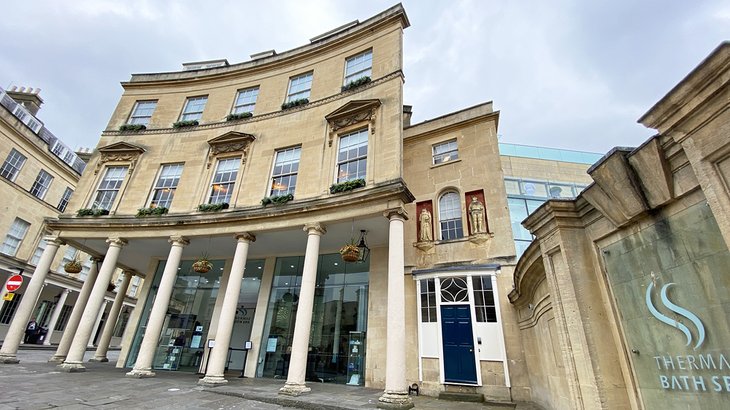
Thermae Bath Spa | Heather Cowper / photo modified
If you'd like to enjoy the same bathing experience as the ancient Romans who built the original baths here, you're in luck. A dip in the waters of Thermae Bath Spa, located across the street from the Roman Baths, is a unique opportunity to enjoy the same thermal waters that have drawn people as far back as the Celts to the area for thousands of years.
A pleasing architectural blend of a new modern glass-faced structure built in 2006 and original Georgian-era buildings, the main bathing area, the New Royal Bath, consists of a stunning open-air rooftop swimming pool plus an indoor pool, two thermal baths, two steam rooms, as well as an "ice chamber." Also worth checking out are the original 18th-century "hot bath" and the delightful garden-side wellness suite.
A number of spa treatments are available, including water massages and hot stone therapies. A fun thing for couples to do is to book one of the romantic twilight packages, including dinner (there's an on-site restaurant), a spa treatment, and a rooftop pool session at sunset.
Nearby is the historic Cross Bath, which provides another opportunity to take a dip in the city's ancient waters. A highlight of a visit to this fully-renovated 18th-century building includes access to the original open-air thermal bath. Adding to the fun is the fact that only 10 guests are permitted at a time. For a truly memorable experience, your 1.5-hour experience can be booked for private sessions, too — a great option for couples and small groups of friends. As with the Thermae Bath Spa, robes and towels are included with your visit.
6. Holburne Museum
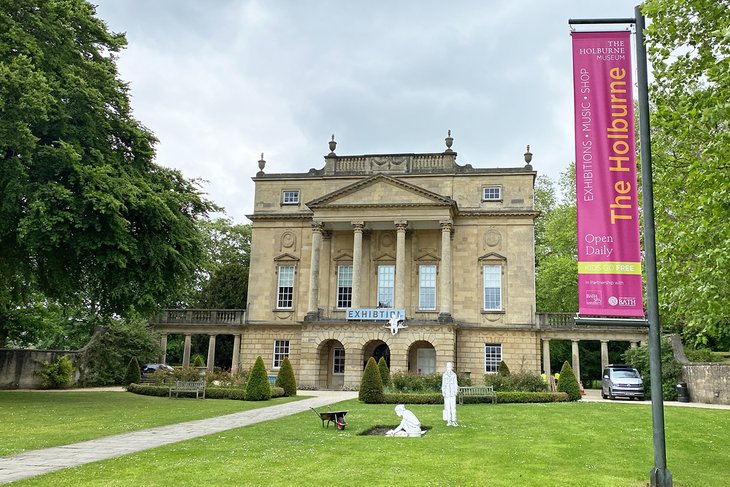
Holburne Museum | T_Marjorie / photo modified
The Holburne Museum's excellent collection of art includes paintings by Gainsborough, Reynolds, and Stubbs, along with 18th-century silver, Wedgwood porcelain, Renaissance bronzes, and early period furniture. Housed in the former Sydney Hotel, famous as the gateway to the 18th-century Pleasure Gardens, the museum now includes a garden café overlooking lovely Sydney Gardens, famous as Britain's only surviving 18th-century pleasure gardens.
A variety of events and educational programs are held frequently, including classical music performances and lectures. If you time it right, a fun thing to do is participate in the museum's "late night" programs, which allows you to explore its many exhibits after hours.
7. Fashion Museum Bath
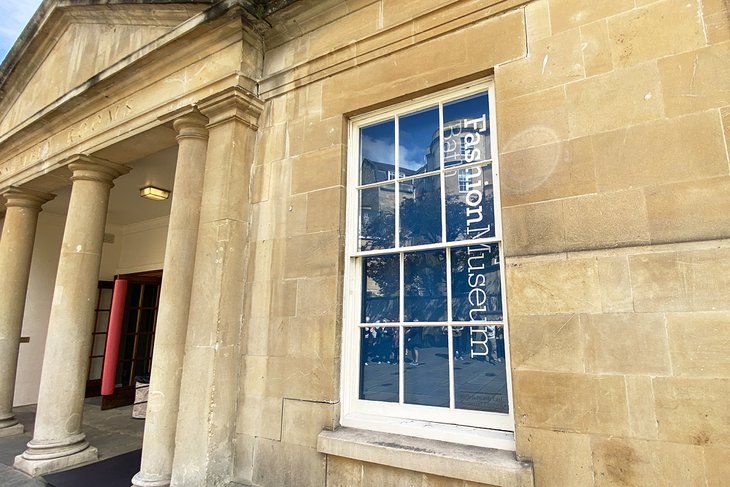
Fashion Museum | vic xia / photo modified
After taking in Bath's splendid architecture, you'll no doubt want to learn a little more about the styles and fashions that would have adorned the residents of the city's many exquisite homes. The Fashion Museum — housed in the architecturally stunning Assembly Rooms — contains a world-class collection of contemporary and historical clothing, including 150 dressed figures and more than 30,000 original items dating from the late 16th century to the present day. Established in 1963, the museum's displays cover a variety of themes such as men's and women's wear, day and evening dress, as well as modern alternative fashion.
Highlights include a unique "dress of the year" wardrobe of dresses from the best-known dressmakers and designers, which have been collected since the museum's opening, with one new example being added each year. Examples can be seen from such leading brands as Mary Quant, Giorgio Armani, and Ralph Lauren. For kids who enjoy dressing up, a fun thing to do is to try on some of the reproduction garments made available for visitors. The museum also has a good cafe, as well as a gift shop.
8. Sally Lunn's House
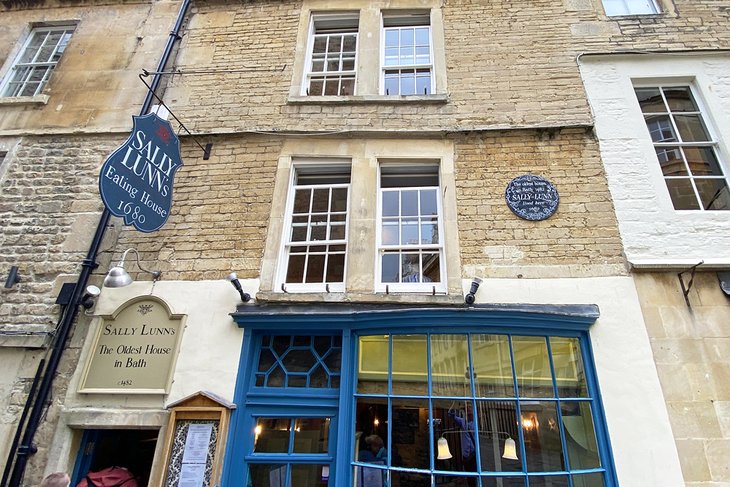
Sally Lunn's House | Elliott Brown / photo modified
Dating from 1482 and rebuilt in 1622, this living museum and historic eating house is famous for its delicious Sally Lunn's Buns, made from secret traditional recipes. Actor Nicolas Cage is reportedly a fan of their cinnamon butter topping (also try the homemade lemon curd with clotted cream), and versions of the bun are popular in places like Williamsburg, Virginia, and New Zealand.
Just steps from Bath Abbey, the cellar museum demonstrates how the site has been used to refresh weary travelers since Roman times and includes the original kitchen, an old oven dating from 1140, along with the only visible remains of medieval Bath. The museum also features a fascinating display portraying how parts of the old city were raised an entire story to save it from flooding and, of course, to allow posh Georgians a better place to promenade. (Hot Tip: The best times to visit and avoid the crowds are around 10am or dinnertime — tables can be reserved for the latter. Alternatively, grab a bun or two as a takeaway.)
9. Herschel Museum of Astronomy
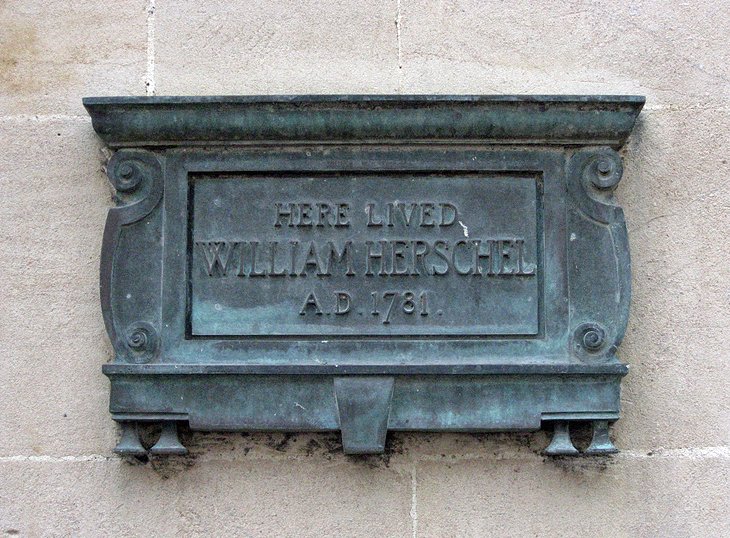
Herschel Museum of Astronomy | Hackworth / photo modified
Housed in a beautifully restored Georgian townhouse, the Herschel Museum of Astronomy contains numerous artifacts related to the acclaimed musician and astronomer, William Herschel. Notable things to see at the museum include original pieces of music and instruments, as well as many references to his greatest achievement, the discovery of the planet Uranus in 1781 — a feat made using a telescope Herschel designed and made himself in this very building.
Self-guided audio tours are available, with many replicas of Herschel's equipment being available to handle and experience. A variety of fun educational programs are available in the museum and its workshop. An authentic Georgian-era garden is also available to explore.
Another itinerary-worthy attraction is the Museum of Bath at Work. Showcasing 2,000 years of Bath's commercial development, the museum's highlights include a reconstruction of a Victorian engineering and mineral water business that ran unchanged through to the 1960s, a stone quarry and crane, as well as a fully functioning cabinet maker's workshop. Of interest to philatelists is the Bath Postal Museum, a fun diversion with displays of related materials and numerous antique postboxes.
10. Jane Austen Centre
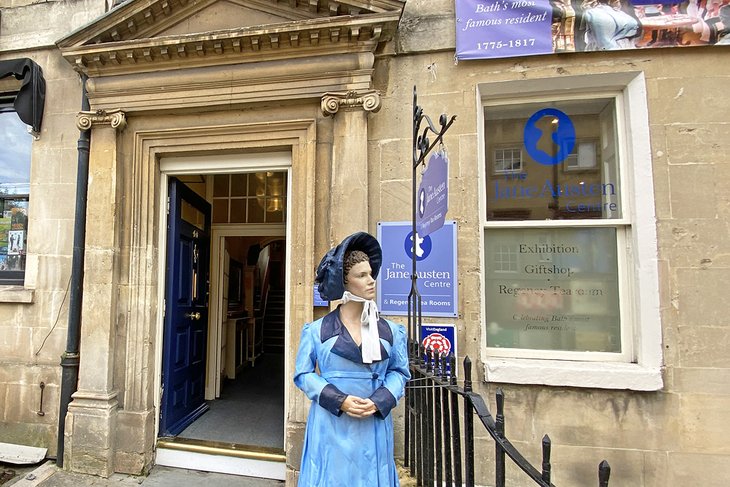
Jane Austen Centre | Ben Sutherland / photo modified
Fans of English literature — and Georgian-era literature in particular — will want to make sure a visit to the Jane Austen Centre on historic Gay Street is included in their Bath itinerary. Austen famously vacationed in Bath before living here full-time from 1801 to 1806, a city that at the time was a gathering place for the country's upper classes, drawn by its famous baths, rural setting, and vibrant social scene.
Highlights of a visit include touring the well-preserved former townhome with a period-costumed guide (guided tours of other city landmarks are also available) and enjoying a wide variety of displays and materials relating to the author's time in Bath. There's even a waxwork of the author, constructed over a two-year period with guidance from forensic scientists to ensure it resembles Austen (of whom no realistic images exist) as closely as possible. A must-do is to pay a visit to the center's tea room for an authentic high tea experience.
If traveling to Bath in the autumn, try to time your visit to coincide with the annual Jane Austen Festival. Held each September, this 10-day celebration culminates in a parade, which draws thousands of visitors and fans, most dressed in authentic period costumes, as well as the much-anticipated Masked Ball — something Austen herself would no doubt have enjoyed.
11. Theatre Royal
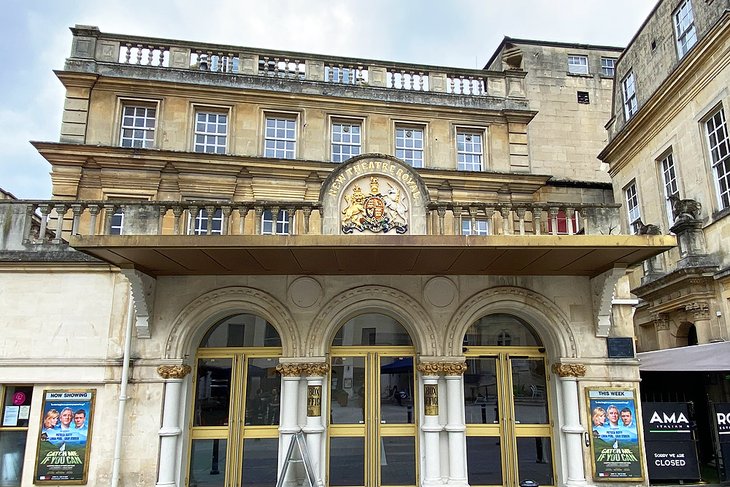
Theatre Royal
Opened in 1805 and host to some of the biggest stars of live theater ever since, the spectacular Theatre Royal was completely renovated in 2010 and is today considered one of the finest examples of surviving Georgian-era architecture in England. In addition to the opportunity to enjoy first-rate theatrical and musical performances, a visit will expose you to the building's stunningly decorated interior.
Highlights include the ornate plasterwork, plush seating, and large chandelier in the 900-seat auditorium, notable for its three separate galleries... and its ghosts, the most famous of whom is the perfumed Grey Lady. In addition to its ever-changing roster of visiting and locally-produced performances, a number of annual events are also held here, including the popular Shakespeare Unplugged Festival.
Theatre Royal also houses a second stage, the Ustinov Studio. This studio theater opened in 1997 and offers an eclectic mix of theater, dance, music, and comedy. Theatre Royal is also home to a dedicated children's theater. The Egg opened in 2005 and hosts numerous kid-focused productions, educational programs and workshops, as well as the fun Family Theatre Festival. In addition to The Egg's café, two restaurants serve both lunch and dinner.
12. Museum of East Asian Art
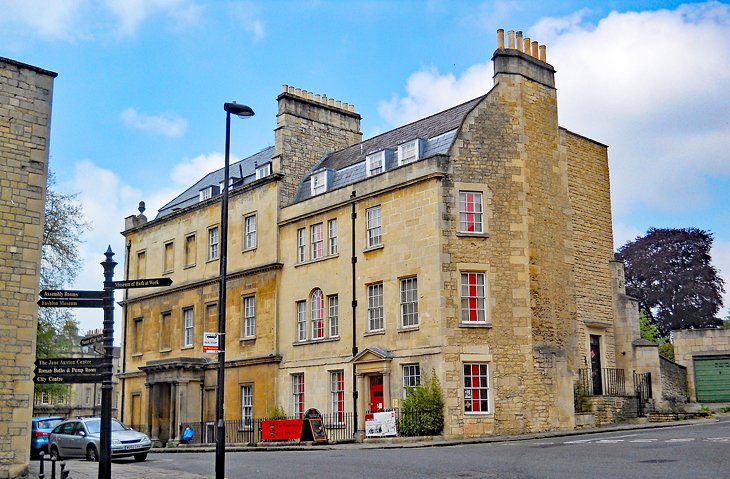
Museum of East Asian Art | shrinkin'violet / photo modified
Be sure to add the Museum of East Asian Art (MEAA) to your list of Bath attractions to explore. Housed in another of the city's gorgeous old Georgian townhomes, this fascinating museum opened in 1993 and contains many fine collections of carvings made from jade and bamboo, as well as bronze sculptures and ceramics from across East- and Southeast Asia, including Korea, Japan, and China. Some of the 2,000-plus items you'll enjoy seeing in this one-of-a-kind museum date back more than 7,000 years.
In addition to its permanent displays, the museum hosts a variety of interesting visiting exhibits throughout the year, as well as educational programs and events, ensuring a return visit is worthwhile. The museum shop is well worth visiting, too, and stocks a sizable range of Asian-inspired products.
13. American Museum and Gardens
Set amid 120 acres of stunning Somerset countryside, the American Museum and Gardens is home to a superb collection of antiquities from colonial times right up to the Civil War years. Set in a majestic 19th-century manor house, this fascinating museum was founded by a couple of antique collectors to house their vast collection of American decorative arts, and is the only museum of its kind to be located outside the US. Highlights include authentic American-styled rooms and furnishings representing various regions and periods from the country's history, along with original quilts, maps, textiles, and folk art. Exhibits dealing with contemporary events are also held and are rotated annually.
Be sure to also allow time to explore the museum's magnificent gardens and grounds. A particularly fun thing to do is to wander the replica of George Washington's Mount Vernon garden. There is also an arboretum to explore, as well as a pleasant trail that takes you past a wide variety of trees native to the US. The museum's recent addition is the New American Garden, which includes an impressive rose collection along with shrubs and perennials. Time your visit right, and you can participate in a variety of living history programs, including reenactments of battles and events from America's rich history. There's also an on-site gift shop selling a range of related souvenirs.
14. Victoria Art Gallery
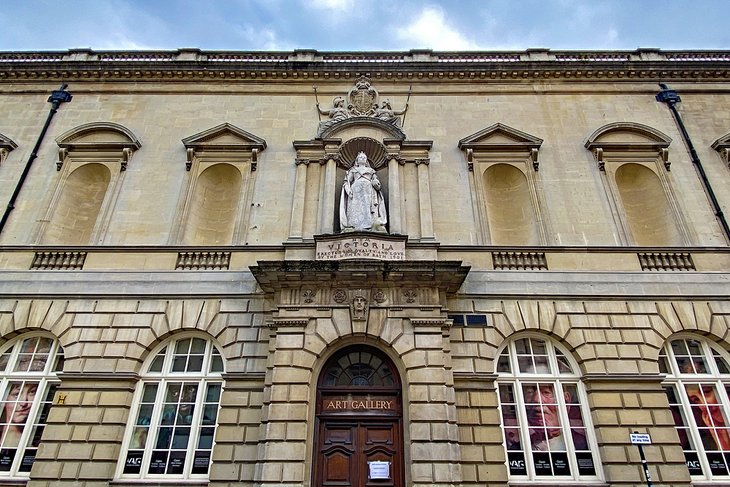
Victoria Art Gallery | Rob Brewer / photo modified
Since throwing open its doors to the public for the first time in 1900, the world-class Victoria Art Gallery has remained one of Bath's most-visited museums. Named after Queen Victoria, who that same year celebrated her diamond jubilee, the museum contains superb collections of works by the likes of such well-respected artists as Gainsborough, Turner, and Sickert. Additional exhibitions may feature items from the gallery's impressive collections of pottery, porcelain, glass, and watches, and are rotated frequently.
As well as being of interest to adult visitors, there are also plenty of fun things for kids to do here, including popular activities such as crafts and drawing. Of special interest for art fans are the Art Store Tours, a behind-the-scenes look at areas and artworks not normally available to the public. Be sure to also pick up your handy guide (a charge applies) from the museum shop.
15. The Bath Festival

The Bath Festival
Picking up where the old Bath International Music Festival (established in 1948) left off, the 17-day-long Bath Festival is an exciting multi-arts event, which continues to draw huge crowds of festival-goers to the city each May. Music, of course, continues to play a large role in the festival, with everything from jazz to classical to folk and international music being included.
A must-attend highlight is the Party in the City event, an exciting evening of music that's free to enjoy with upwards of 2,000 performers from various music genres playing at multiple venues across Bath. There's also a strong literary component, which includes everything from poetry to contemporary fiction. For those traveling with kids, consider a visit in the autumn for the Bath Children's Literature Festival. Billed as the largest such festival in Europe, highlights include author readings; illustration workshops; and plenty of family-friendly fun activities including arts, crafts, and games.
16. Prior Park Landscape Garden
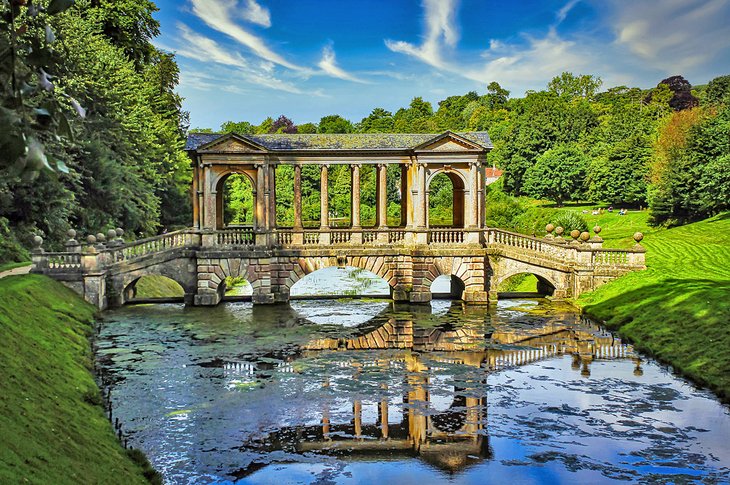
Prior Park Landscape Garden | James Hill & Eliza Jablonska / photo modified
Just two miles southeast of Bath is one of the most picturesque rural settings to be found anywhere in England: Prior Park Landscape Garden. Built between 1735 and 1750, Prior Park itself was the creation of renowned architect John Wood, whose design is considered to be one of the best examples of the Palladian-style mansions so popular during the period. But it's the beautiful gardens designed by poet Alexander Pope and famed garden architect Capability Brown that so defines this National Trust property, and which makes it a must for any Somerset itinerary.
A focus of any visit should be exploring the magnificent (and extremely photogenic) Palladian bridge, one of only four such bridges still standing worldwide. Other features of note include a picturesque Gothic temple, a grotto, and a good-sized serpentine lake.
In fact, so pleasing an experience is wandering this property that you'll certainly want to take your time, especially if you combine it with a walk along the Bath Skyline pathway, which can be joined close by. Also worth doing is taking one of the park's first-rate free guided tours. These 90-minute walking tours include wildlife and fungi excursions, a head gardener option, as well as seasonal explorations (autumn is a good time to visit for the colors and the smaller crowds). And if all that walking makes you thirsty, pay a visit to the fun "tea shed" for a hot beverage.
Comments
Post a Comment